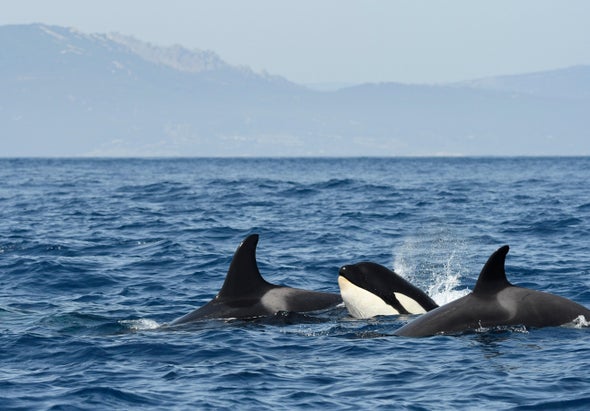Killer whales in a group near Spain and Portugal may be teaching one another to mess with small boats. They sank their third vessel earlier this month
Thank you for reading this post, don't forget to subscribe!
Researchers aren’t sure why the orcas are going after the watercraft. There are two hypotheses, according to López. One is that the killer whales have invented a new fad, something that subpopulations of these members of the dolphin family are known to do. Much as in humans, orca fads are often spearheaded by juveniles, López says. Alternatively, the attacks may be a response to a bad past experience involving a boat.
The first known incident occurred in May 2020 in the Strait of Gibraltar, an area with heavy boat traffic. Since then GTOA has recorded 505 cases of orcas reacting to boats. Sometimes they simply approached the vessels, and only a fraction of cases involved physical contact, López says. In a study published in June 2022 in Marine Mammal Science, he and his colleagues cataloged 49 instances of orca-boat contact in 2020 alone. The vast majority of the attacks were on sailboats or catamarans, with a handful involving fishing boats and motorboats. The average length of the vessels was 12 meters (39 feet). For comparison, a full-grown orca can be 9.2 meters (30 feet) long.
The researchers found that the orcas preferentially attack the boats’ rudder, sometimes scraping the hull with their teeth. Such attacks often snap the rudder, leaving the boat unable to navigate. In three cases, the animals damaged a boat so badly that it sank: In July 2022 they sank a sailboat with five people onboard. In November 2022 they caused a sailboat carrying four to go down. And finally, in this month’s attack, the Swiss sailing yacht Champagne had to be abandoned, and the vessel sank while it was towed to shore. In all cases, the people onboard were rescued safely.
In 2020 researchers observed nine different individual killer whales attacking boats; it’s unclear if others have since joined in. The attacks tended to come from two separate groups: a trio of juveniles occasionally joined by a fourth and a mixed-aged group consisting of an adult female named White Gladis, two of her young offspring and two of her sisters. Because White Gladis was the only adult involved in the initial incidents, the researchers speculate that she may have become entangled in a fishing line at some point, giving her a bad association with boats. Other adult orcas in the region have injuries consistent with boat collisions or entanglement, López says. “All this has to make us reflect on the fact that human activities, even in an indirect way, are at the origin of this behavior,” he says.
The safe rescue of everyone involved, however, suggests to Deborah Giles that these orcas don’t have malevolent motivations against humans. Giles, science and research director of the Washington State–based nonprofit conservation organization Wild Orca, points out that humans relentlessly harassed killer whales off the coasts of Washington and Oregon in the 1960s and 1970s, capturing young orcas and taking them away for display at marine parks. “These are animals that, every single one of them, had been captured at one point or another—most whales multiple times. And these are whales that saw their babies being taken away from them and put on trucks and driven away, never to be seen again,” Giles says. “And yet these whales never attacked boats, never attacked humans.”
Though it’s possible that the orcas around the Iberian Peninsula could be reacting to a bad experience with a boat, Giles says, it’s pure speculation to attribute that motivation to the animals. The behavior does seem to be learned, she says, but could simply be a fad without much rhyme or reason—to the human mind, anyway. Famously, some members of the Southern Resident orcas that cruise Washington’s Puget Sound each summer and fall spent the summer of 1987 wearing dead salmon on their head. There was no apparent reason for salmon hats to come in vogue in orca circles, but the behavior spread and persisted for a few months before disappearing again. “We’re not going to know what’s happening with this population,” Giles says, referring to the Iberian orcas.
The Iberian orca attacks typically last less than 30 minutes, but they can sometimes go on for up to two hours, according to the 2022 study. In the case of the Champagne, two juvenile killer whales went after the rudder while an adult repeatedly rammed the boat, crew members told the German magazine Yacht. The attack lasted 90 minutes.
The Iberian orca subpopulation is considered critically endangered, with only 39 animals the last time a full census was conducted in 2011. A 2014 study found that this subpopulation follows the migration of their key prey, Atlantic bluefin tuna—a route that puts them in close contact with human fishing, military activities and recreational boating. Maritime authorities recommend that boaters in the area slow down and try to stay away from orcas, López says, but there is no guaranteed way to avoid the animals. He and his colleagues fear the boat attacks will come back and bite the orcas, either because boaters will lash out or because the attacks are dangerous to the animals themselves. “They run a great risk of getting hurt,” López says.
ABOUT THE AUTHOR(S)

Stephanie Pappas is a freelance science journalist. She is based in Denver, Colo.
